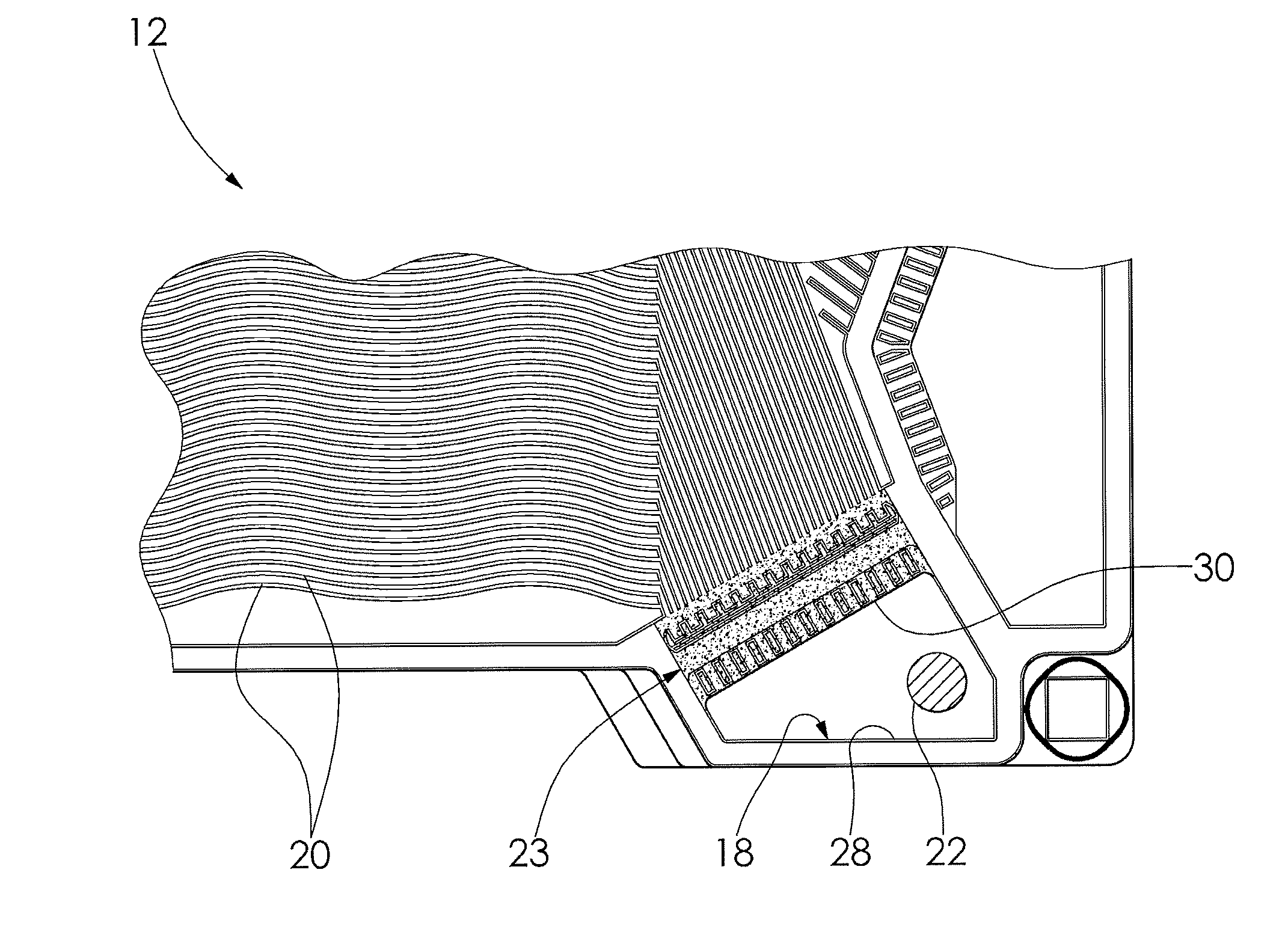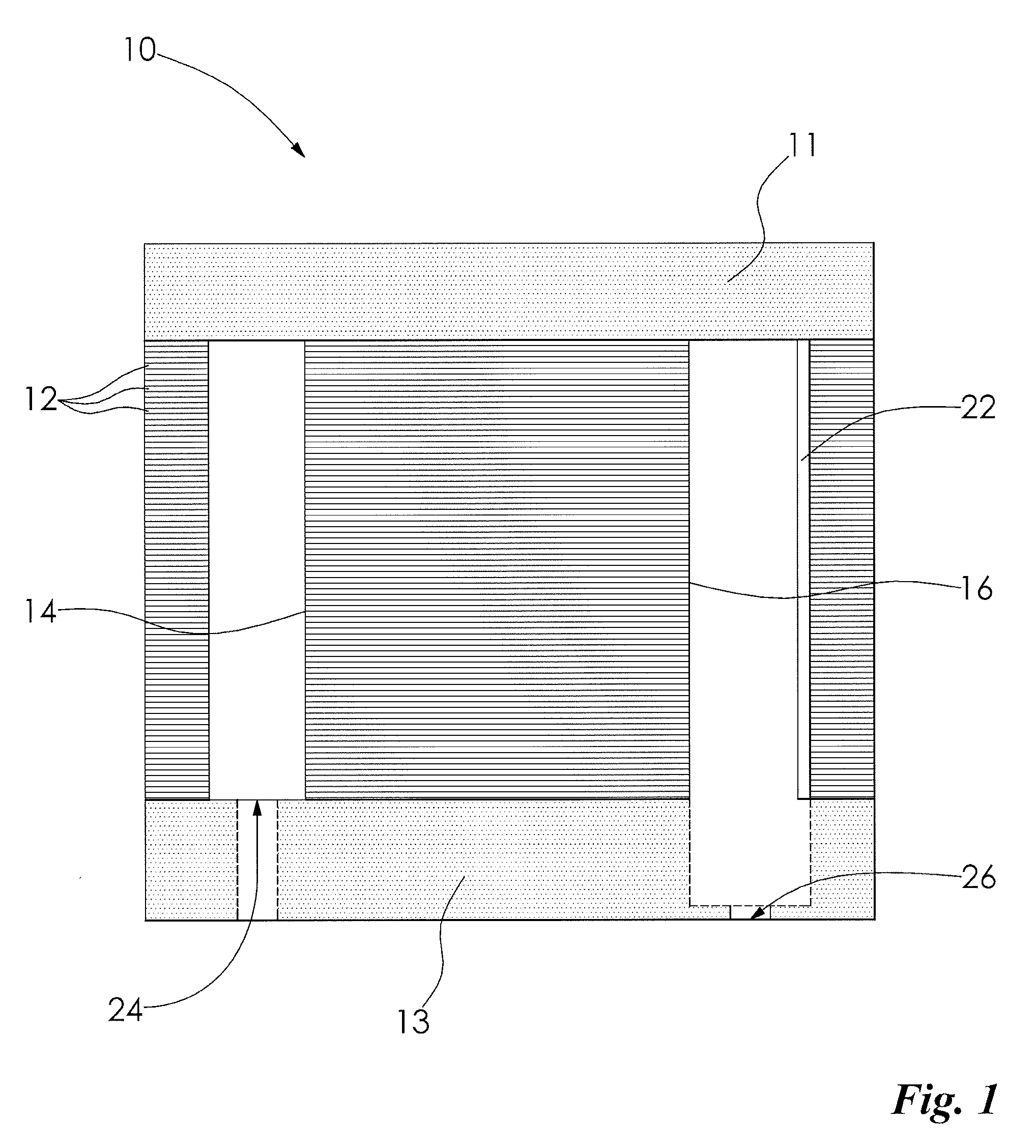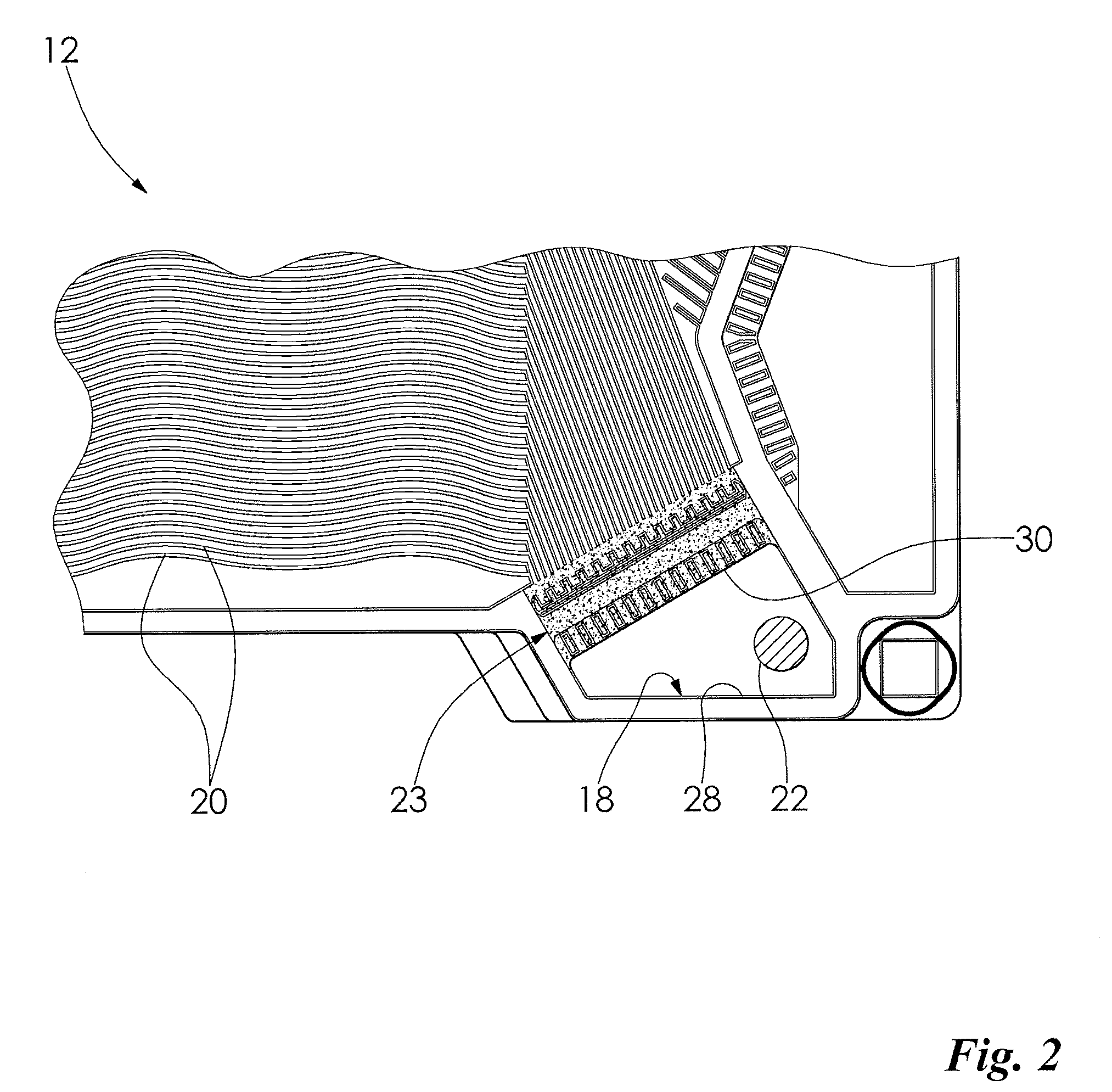Fuel cell assembly manifold heater for improved water removal and freeze start
a fuel cell and manifold heater technology, which is applied in the direction of fuel cells, cell components, fuel cell groupings, etc., can solve the problems of limiting the flow of fluid through the outlet manifold, damage to the fuel cell assembly, and condensation may form ice, so as to achieve quick and efficient heating of the fuel cell assembly
- Summary
- Abstract
- Description
- Claims
- Application Information
AI Technical Summary
Benefits of technology
Problems solved by technology
Method used
Image
Examples
first embodiment
[0026]When the invention is in operation, the above reactions take place within the fuel cell assembly 10, and droplets of liquid water are formed in the channels 20 of the fuel cell plates 12 on the cathode sides of the fuel cell assembly 10. Some water also may be transported into the anode flow channels, or may form in the anode channels via condensation resulting from consumption of the hydrogen. It is understood that the operation as described herein for the cathode side is similar to operation for the anode side of the fuel cell assembly 10. The air stream flowing through the cathode side causes the water droplets to flow through the channels 20, toward the outlet manifold 16. Water vapor also flows towards the outlet manifold 16. The hydrophilic portion 23 is adapted to provide a capillary path from the flow channels 20 to the outlet manifold 16 and to facilitate a wicking of the water away from the flow channels 20.
[0027]To militate against the water droplets and vapor cond...
second embodiment
[0038]When the invention is in operation, the above reactions take place within the fuel cell assembly 10′, and droplets of liquid water are formed in the channels 20′ of the fuel cell plates 12′ on the cathode sides of the fuel cell assembly 10′. Some water also may be transported into the anode flow channels, or may form in the anode channels via condensation resulting from consumption of the hydrogen. It is understood that the operation as described herein for the cathode side is similar to operation for the anode side of the fuel cell assembly 10′. The air stream flowing through the cathode side causes the water droplets to flow through the channels 20′, toward the outlet manifold 16′. Water vapor is also caused to flow towards the outlet manifold 16′.
[0039]To militate against the water droplets and vapor condensing and collecting at the edge 30′ of the outlet aperture 18′, the means for heating 22′ is caused to heat the edge 30′ of the fuel cell plates 12′ with conductive heat...
PUM
| Property | Measurement | Unit |
|---|---|---|
| hydrophilic | aaaaa | aaaaa |
| stability | aaaaa | aaaaa |
| temperatures | aaaaa | aaaaa |
Abstract
Description
Claims
Application Information
 Login to View More
Login to View More - R&D
- Intellectual Property
- Life Sciences
- Materials
- Tech Scout
- Unparalleled Data Quality
- Higher Quality Content
- 60% Fewer Hallucinations
Browse by: Latest US Patents, China's latest patents, Technical Efficacy Thesaurus, Application Domain, Technology Topic, Popular Technical Reports.
© 2025 PatSnap. All rights reserved.Legal|Privacy policy|Modern Slavery Act Transparency Statement|Sitemap|About US| Contact US: help@patsnap.com



